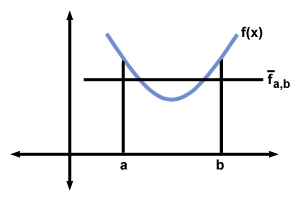Please wait while we process your payment
If you don't see it, please check your spam folder. Sometimes it can end up there.
If you don't see it, please check your spam folder. Sometimes it can end up there.
Please wait while we process your payment

By signing up you agree to our terms and privacy policy.
Don’t have an account? Subscribe now
Create Your Account
Sign up for your FREE 7-day trial
By signing up you agree to our terms and privacy policy.
Already have an account? Log in
Your Email
Choose Your Plan
Individual
Group Discount
Save over 50% with a SparkNotes PLUS Annual Plan!
 payment page
payment page
Purchasing SparkNotes PLUS for a group?
Get Annual Plans at a discount when you buy 2 or more!
Price
$24.99 $18.74 /subscription + tax
Subtotal $37.48 + tax
Save 25% on 2-49 accounts
Save 30% on 50-99 accounts
Want 100 or more? Contact us for a customized plan.
 payment page
payment page
Your Plan
Payment Details
Payment Summary
SparkNotes Plus
You'll be billed after your free trial ends.
7-Day Free Trial
Not Applicable
Renews April 30, 2025 April 23, 2025
Discounts (applied to next billing)
DUE NOW
US $0.00
SNPLUSROCKS20 | 20% Discount
This is not a valid promo code.
Discount Code (one code per order)
SparkNotes PLUS Annual Plan - Group Discount
Qty: 00
SparkNotes Plus subscription is $4.99/month or $24.99/year as selected above. The free trial period is the first 7 days of your subscription. TO CANCEL YOUR SUBSCRIPTION AND AVOID BEING CHARGED, YOU MUST CANCEL BEFORE THE END OF THE FREE TRIAL PERIOD. You may cancel your subscription on your Subscription and Billing page or contact Customer Support at custserv@bn.com. Your subscription will continue automatically once the free trial period is over. Free trial is available to new customers only.
Choose Your Plan
This site is protected by reCAPTCHA and the Google Privacy Policy and Terms of Service apply.
For the next 7 days, you'll have access to awesome PLUS stuff like AP English test prep, No Fear Shakespeare translations and audio, a note-taking tool, personalized dashboard, & much more!
You’ve successfully purchased a group discount. Your group members can use the joining link below to redeem their group membership. You'll also receive an email with the link.
Members will be prompted to log in or create an account to redeem their group membership.
Thanks for creating a SparkNotes account! Continue to start your free trial.
We're sorry, we could not create your account. SparkNotes PLUS is not available in your country. See what countries we’re in.
There was an error creating your account. Please check your payment details and try again.
Please wait while we process your payment

Your PLUS subscription has expired
Please wait while we process your payment
Please wait while we process your payment

Average Value of a Function
It is not entirely obvious what is meant by the average (or mean) value of a function on an interval. We know how to find the mean of a finite collection of numbers (their sum divided by their number). Needless to say, we run into problems when we want to talk about the mean of all the values of a function on a particular interval, since they are infinite in number.
To find our way out of this conundrum, we recall the definition of the n-th (upper) Riemann sum for the function f on the interval [a, b]:
Un(f, a, b) =   Mi Mi |
Note that Un(f, a, b) is equal to to the product of b - a (the length of the interval) and the mean of the values of f at n more or less evenly-spaced points in the interval. Clearly this is a reasonable approximate mean of the function f on the interval [a, b].
Naturally, the same is true for the nth lower Riemann sum. As n
gets larger and larger, we might imagine the upper and lower Riemann
sums to approach (one from above, one from below) the product of b - a
and some "true" mean of the function f on [a, b]. Indeed, this
indicates precisely how we will define the average value, denoted
 . We set
. We set
 | = |   Un(f, a, b) Un(f, a, b) | |
| = |   Ln(f, a, b) Ln(f, a, b) | ||
| = |   f (x)dx f (x)dx |
There is a way of seeing graphically that this definition makes sense. An easy
computation shows that the integral of the constant  from a to b is
equal to that of the function f (x):
from a to b is
equal to that of the function f (x):
  dx dx | = |  |ab |ab | |
| = |  (b - a) (b - a) | ||
| = |  f (x)dx f (x)dx |
Thus,  is the height of a rectangle of length b - a
that will have the same area as the region below the graph of f (x)
from a to b. In physical terms, if f (t) represents the velocity
of a moving object, then another object moving with velocity
is the height of a rectangle of length b - a
that will have the same area as the region below the graph of f (x)
from a to b. In physical terms, if f (t) represents the velocity
of a moving object, then another object moving with velocity
 will travel the same distance between the moments
t = a and t = b.
will travel the same distance between the moments
t = a and t = b.


Please wait while we process your payment

